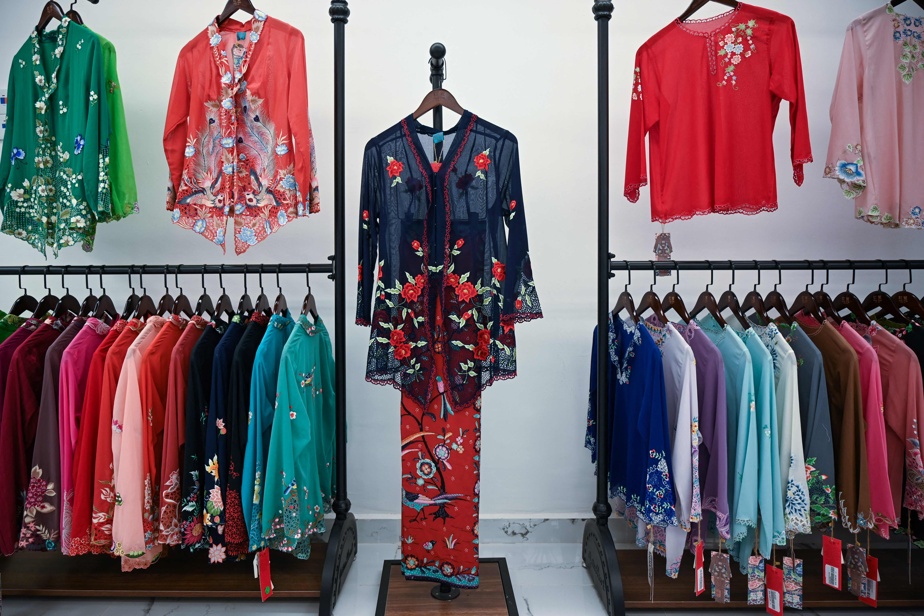(Ampang) In a boutique in Malaysia, seamstresses painstakingly embroider flowers and leaves onto “kebayas,” elegant bodices worn by women across Southeast Asia for centuries.
“The kebaya is special because it can be worn by everyone” in a region of great ethnic diversity, said Lim Yu Lin, who runs a family business founded by her grandmother in 1955.
“It’s not just for one culture,” she told AFP.
Last month, Malaysia, Indonesia, Singapore, Brunei and Thailand jointly nominated the kebaya for the UNESCO World Heritage List.
Adapted to the tropical climate, the bodice decorated with embroidery often has long sleeves and is sometimes semi-transparent, or opaque.
Kebayas can cost a low $7 for machine-made models, up to $1,200 for the more high-end, hand-sewn pieces.
Indonesia adopted the kebaya as its national costume after its independence in 1945.
It was popularized by Malaysian film actresses in the mid-twentieth century.
The national airlines of Singapore, Malaysia or Indonesia have also been inspired by the kebaya for their flight attendant uniforms.
In the region, they were mostly worn for special occasions or weddings, but some fashionistas wear them again in everyday life.
Charmaine Neo, a 36-year-old Singaporean who wears this outfit for family events, finds it suitable for everyone.
“It’s not just for older people. You also see a lot of young people wearing the kebaya.”
“It really flatters the figure.”
In Indonesia, Telly Nathalia fell in love with kebayas during a vacation in the center of the island of Java in 2014, and soon after began to wear them every day.
For this 49-year-old woman, wearing the kebaya is a way to reconnect with the history of her country. “Our ancestors liked to wear the kebaya,” she told AFP.
“People ask me, ‘Are you going to a party or a wedding?’ “. “Because in Indonesia when you wear a kebaya, people think it’s for a special occasion.”
This garment is said to have come from the Middle East and was once worn by both men and women.
More than a dozen different styles of kebayas have emerged across Southeast Asia, especially in Indonesia and Malaysia.
“It’s a traditional women’s garment that has evolved over time,” said Yeo Kirk Siang, director of Singapore’s National Heritage Office, which organized an exhibition dedicated to this outfit, in connection with its application to UNESCO.
“There was like a fusion of cultures and influences, with different communities creating their own kebayas.”
In the Hindu island of Bali, it is made of lace and worn with a belt, in Singapore it is often decorated with Chinese-influenced embroidery.
The kebayas of the island of Java were once adorned with Dutch lace, and today can be cut wider to satisfy the taste of Muslim customers.
Oniatta Effendi, a designer from Singapore who revisits this traditional bodice, sees it as a symbol of cultural heritage.
“Many of us have seen kebayas worn by our mothers and grandmothers. It represents our culture, our identity,” she said, as quoted by the Singapore Heritage Office.
“The kebaya may look different in different countries. Its importance may also be different for everyone, but one thing is certain: the kebaya brings us together through a shared identity”.















